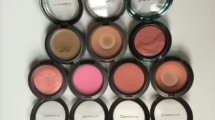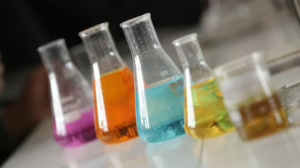From Molecules to Murals: Exploring the World of Chemistry Wallpaper
Introduction
In the realm of interior design, wallpaper has traditionally been associated with florals, geometrics, and more abstract patterns. However, a unique trend is emerging that blends art, science, and aesthetics: chemistry wallpaper. This innovative concept brings the intricate world of molecules, chemical structures, and scientific motifs into our living spaces. In this article, we will explore the origins, significance, and implications of chemistry wallpaper, examining how it serves as both a decorative and educational tool.
The Intersection of Art and Science
The Aesthetics of Molecules
The exploration of chemistry through visual representation is not a new concept. Scientists have long used diagrams and illustrations to communicate complex ideas. However, when translated into wallpaper designs, these representations take on a new life. Molecules, atomic structures, and chemical reactions can be transformed into stunning visual patterns that captivate the eye.
The Role of Color and Design
Color plays a pivotal role in chemistry wallpaper design. The vibrancy often associated with chemical compounds can be cleverly employed to create visually striking patterns. For example, the vivid blues of copper sulfate crystals or the metallic hues of transition metals can create an inviting atmosphere in a space. The design possibilities are endless, offering both a feast for the eyes and a conversation starter.
Cultural Implications
Chemistry wallpaper also serves a cultural function, bridging the gap between science and society. In recent years, there has been a growing interest in making science more accessible and engaging to the public. By incorporating scientific themes into home decor, designers tap into a cultural zeitgeist that values knowledge, curiosity, and the beauty of nature at the molecular level[^1].
The Educational Value of Chemistry Wallpaper
Learning Through Decoration
One of the most exciting aspects of chemistry wallpaper is its potential as an educational tool. By displaying chemical formulas, molecular structures, and even periodic table designs in homes or classrooms, these wallpapers can inspire curiosity and prompt discussions about science. Children and adults alike can benefit from exposure to scientific concepts in a visually appealing manner.
Case Study: Inspire, Design, and Educate
Consider a children’s room adorned with a wallpaper depicting the periodic table in an age-appropriate design. Each element can be illustrated with its unique characteristics, creating an engaging learning environment. This innovative approach transforms a simple bedroom into a space of scientific exploration, fostering a love of learning from a young age[^2].
Encouraging STEM Engagement
With the push for increased STEM (Science, Technology, Engineering, and Math) engagement in education, chemistry wallpaper can serve as an effective tool. By encouraging educational institutions to embrace such designs, we can cultivate a culture that prioritizes science alongside the arts. This dual approach can inspire future generations to pursue careers in science, opening doors to new opportunities[^3].
The Design Process: Behind the Scenes
Collaborating with Chemists
Creating chemistry wallpaper requires collaboration between artists and chemists. The accuracy of scientific representations is crucial to ensure that the designs are not only aesthetically pleasing but also scientifically valid. This collaboration allows for the creation of designs that are both beautiful and educational.
Examples of Collaborative Projects
Some companies have begun to partner with educational institutions to produce wallpaper that accurately reflects current scientific understanding. These projects often include input from scientists to ensure the integrity of the designs. They can also serve as platforms for showcasing groundbreaking research in an accessible manner[^4].
Technology in Design
The advent of digital design tools has revolutionized how wallpaper is created. Artists can now manipulate images of molecules, chemical reactions, and graphs with ease, allowing for an unprecedented level of creativity and precision. For example, 3D modeling software can help create textured surfaces that mimic the feel of real-world chemical phenomena, such as crystalline structures.
The Future of Chemistry Wallpaper
Broadening the Scope
The potential applications of chemistry wallpaper extend beyond traditional spaces. Laboratories, educational institutions, and public spaces can benefit from designs that inspire and educate. Imagine a hospital waiting area adorned with calming yet educational designs that depict the healing properties of various chemicals or a university lecture hall with wallpaper that illustrates complex theories in an engaging way.
Marketing and Branding Opportunities
For businesses and organizations, chemistry wallpaper presents unique marketing opportunities. Companies in the chemical, pharmaceutical, or educational sectors can use themed wallpapers to enhance their branding, showcasing their commitment to innovation and education in a visually impactful way. This strategy can set them apart in an increasingly competitive market[^5].
Environmental Consciousness
As environmental issues become more pressing, the materials used in wallpaper production are becoming a focal point of concern. Many companies are exploring sustainable options for wallpaper, including eco-friendly inks and recyclable materials. Chemistry wallpaper can raise awareness about environmental issues by depicting themes related to sustainability or the chemistry behind green technologies.
Conclusion
Chemistry wallpaper represents a fascinating intersection of art and science, breathing new life into traditional interior design. By combining aesthetic appeal with educational value, these designs have the power to inspire curiosity and foster a greater appreciation for the sciences. As the trend continues to evolve, we can anticipate a bright future for chemistry wallpaper, reaching beyond the confines of home decor to impact education, marketing, and cultural perceptions of science.
By supporting this innovative movement, we can help to bridge the gap between science and society, celebrating the beauty of the molecular world in our everyday lives.























Add Comment